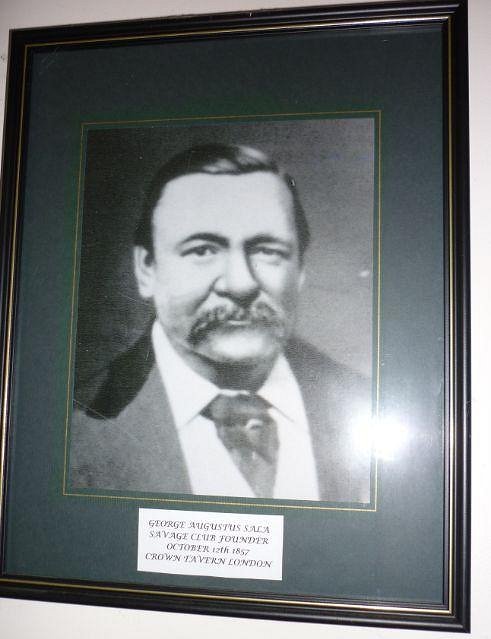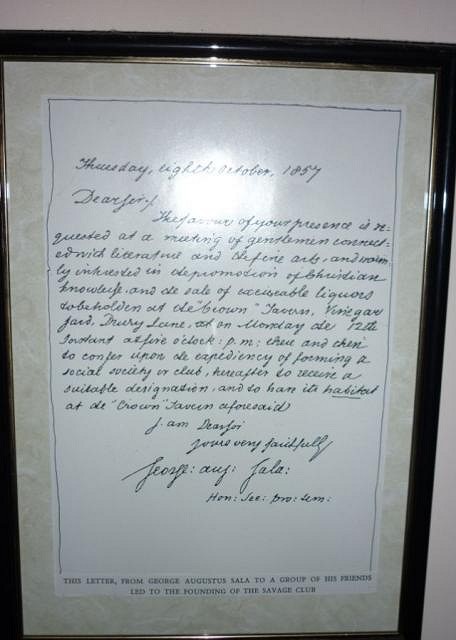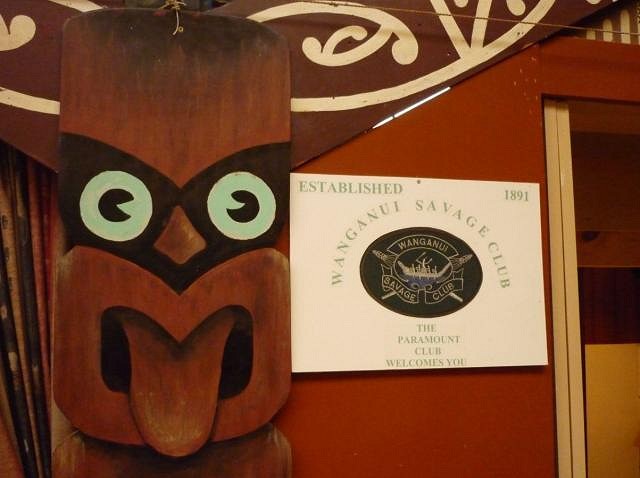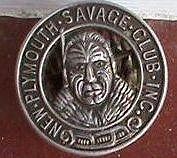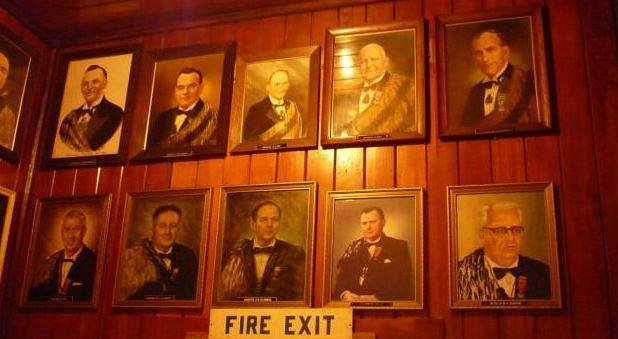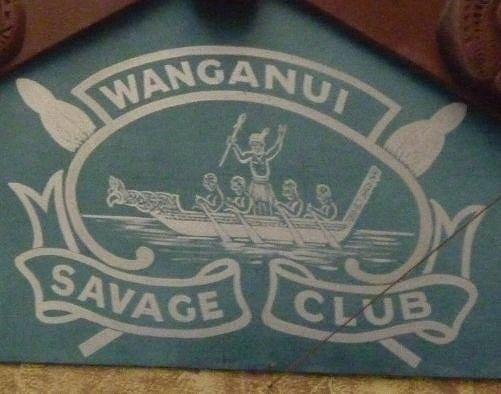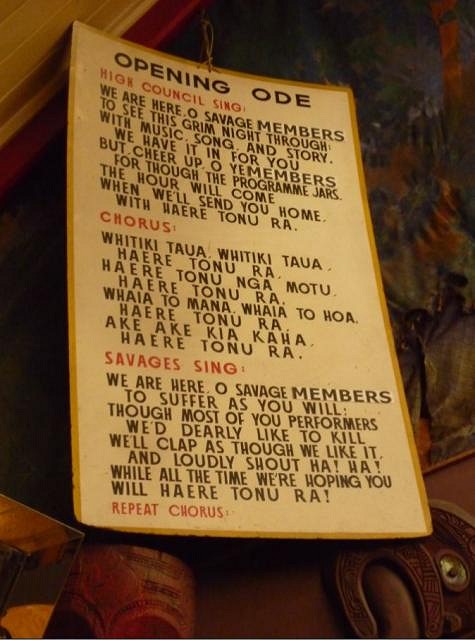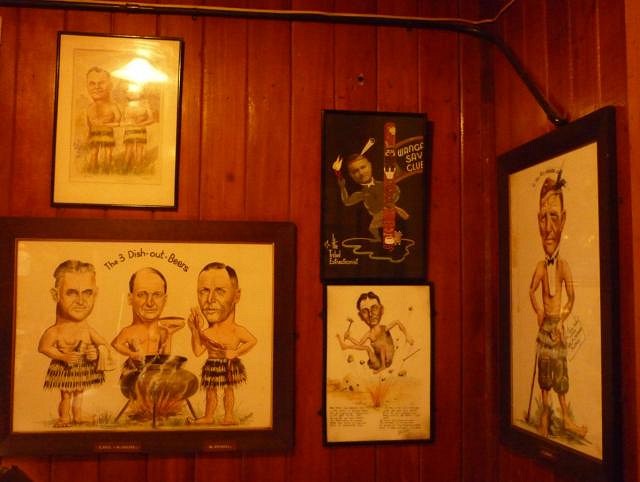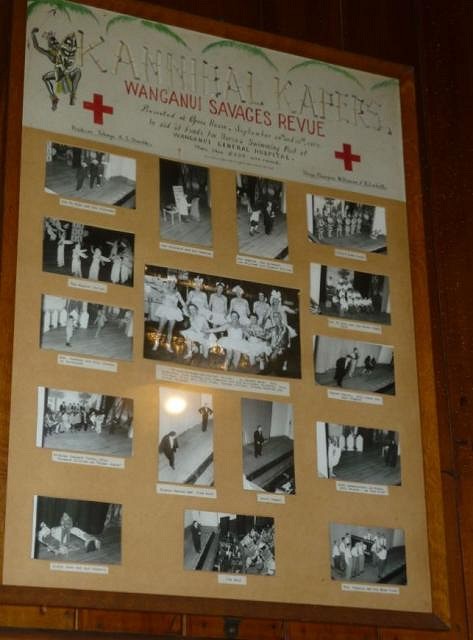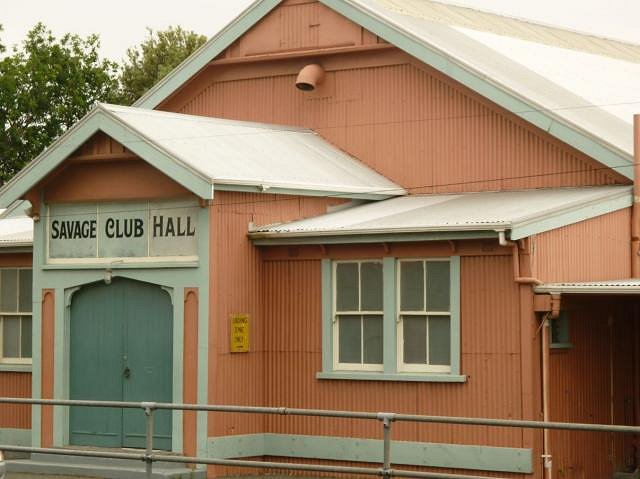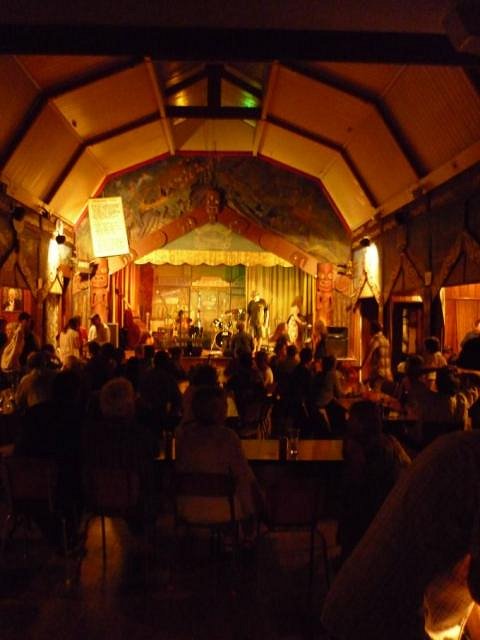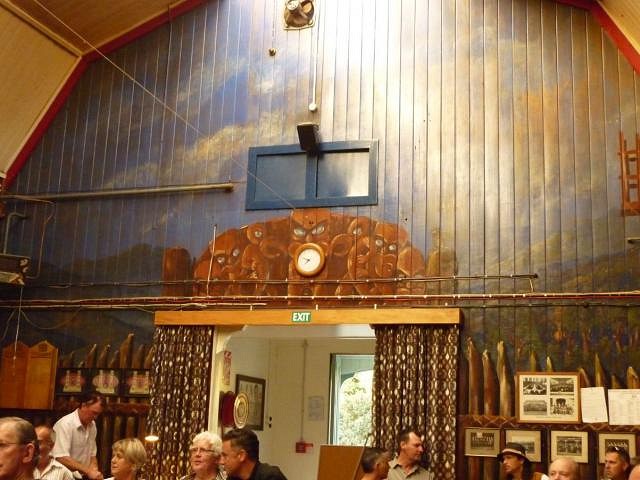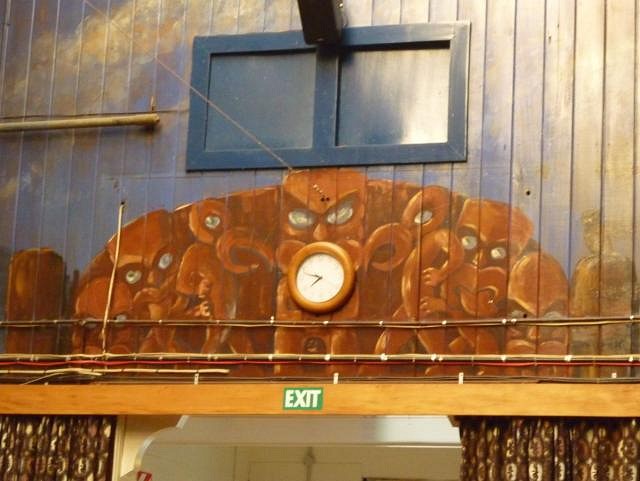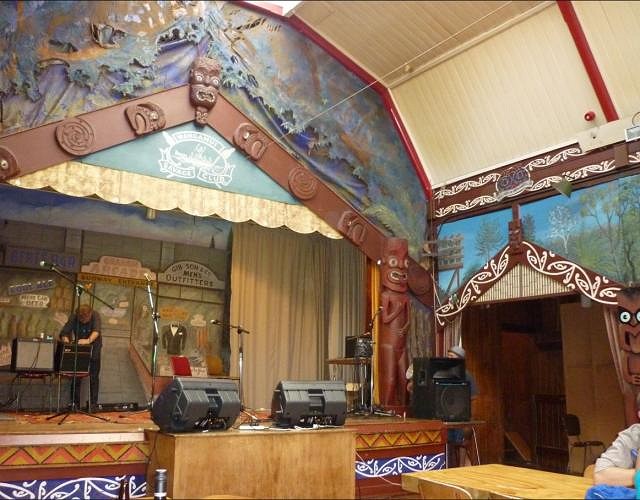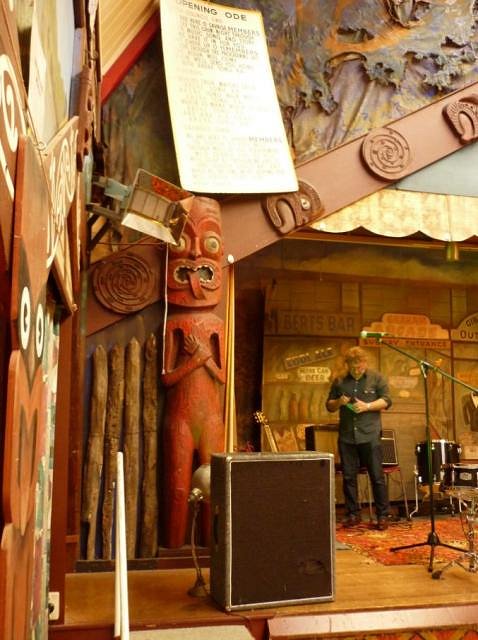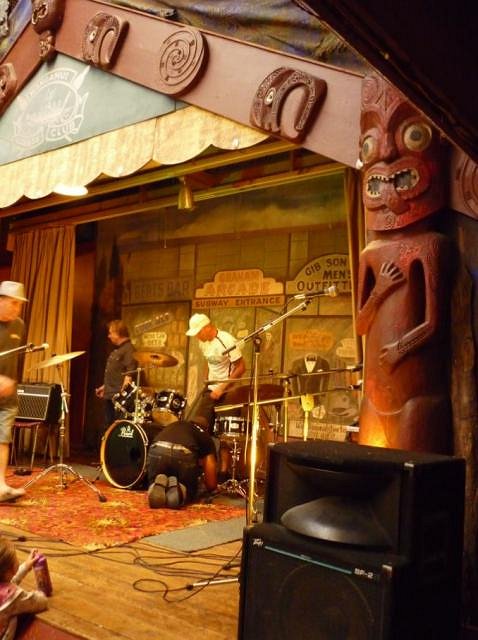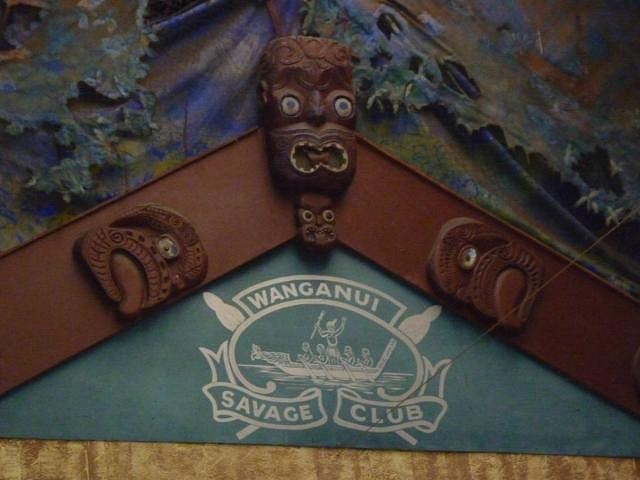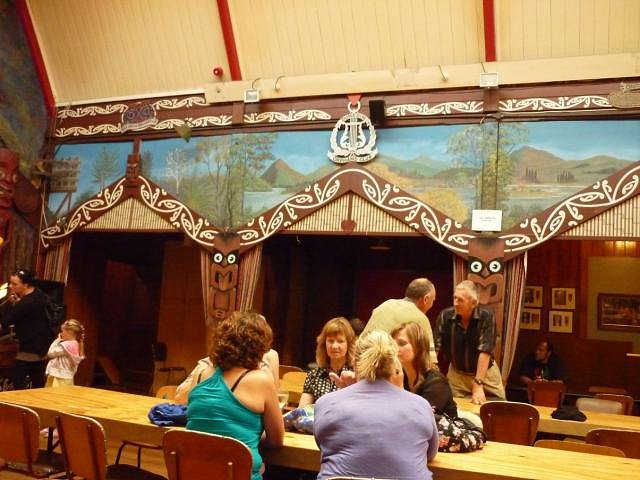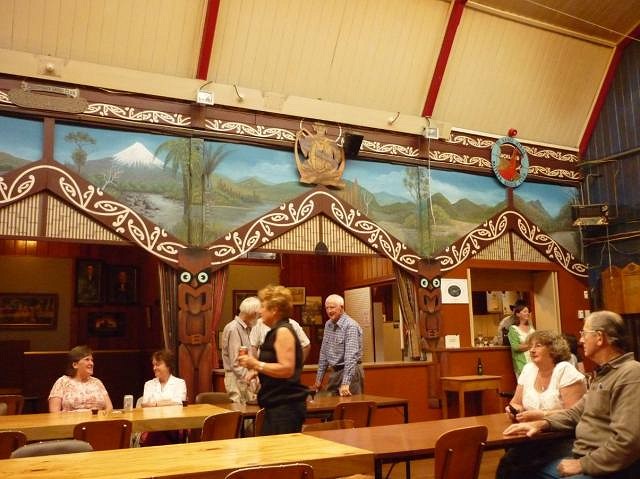Tiki Central / Tiki Travel / Wanganui: The Tiki Tour
Post #567647 by Club Nouméa on Sun, Dec 5, 2010 4:50 AM
|
CN
Club Nouméa
Posted
posted
on
Sun, Dec 5, 2010 4:50 AM
Part 6: Tiki Culture's Missing Link: The Wanganui Savage Club In Part 6 of the Wanganui Tiki Tour, we investigate a missing link in tiki culture... Our story begins in London in the 1850s with George Augustus Sala, a journalist and author whose works were published in reviews by Charles Dickens and William Makepeace Thackeray, among others:
On 8 October 1857, Mr Sala called a meeting of gentlemen at the Crown Tavern in Drury Lane, London, to "confer upon the expediency of forming a social society or club, hereafter to receive a suitable designation":
The outcome of this meeting was the creation of the Savage Club, originally intended to be a somewhat irreverent literary club, which was named after one Richard Savage, a minor 18th-century satirical poet with a dubious background. Savage was a friend of Dr Johnson's, and had a reputation as being a violent man who had a lifetime of quarrels and brawls, one of which he killed a man in. He was also successfully prosecuted for libel, and was imprisoned for being a delinquent debtor. This London club met fortnightly for dinners, followed by entertainment, and such was its success that counterparts began popping up all over the British Empire. Out in the colonies and dominions, the name "Savage Club" was given a further twist through cultural associations that were not originally intended by the London club, but were just as irreverent. In Canada for example, local chapters adopted Pacific Northwest Indian icons and customs. So it was only natural that when, in 1891, the first Savage Club in New Zealand was founded, it should adopt the iconography and customs of the local Maori:
The Wanganui chapter was the first of a series of Savage Clubs across New Zealand, some of which were established as far away as Christchurch and Oamaru, in the South Island. Like the Paramount Savage Club in Wanganui, other branches also adopted Polynesian imagery. Here is a badge from the New Plymouth Savage Club:
Like the original London Savage Club, the New Zealand Savage Clubs would meet every few weeks for food, drink, and entertainment, but unlike the English originators, the New Zealand clubs adopted the ceremonial titles, clothing, and symbols of indigenous Maori: The Club President was called the "Rangatira" (Chief), and wore a Maori korowai (cloak) and a hei-tiki around his neck:
Tikis are clearly visible on 6 of these paintings of Wanganui Savage Club Rangatiras from the mid-20th century. In the late-20th century, ordinary members wore green blazers with the emblem of the Wanganui Savage Club stitched onto their breast pocket:
A major part of the Savage Clubs was the evening entertainment which, in addition to local members, was provided periodically by visiting performers from other chapters, all of whom would be greeted by singing of the Savage Club song:
It is interesting to speculate on what the covered-up and amended words in this song originally were. Judging from the rhyme on line 3, it is safe to assume that the original word covered over by "members" was "hori". For North American readers unfamiliar with this term, although in the 19th century this was originally just an informal name for Maori, over the years it has come to assume racist overtones, and nowadays it is just as taboo in New Zealand as the "N-word" is in the US. While I do not have statistics at hand, judging from the photos and paintings hanging on the walls of the Wanganui Savage Club Hall, the majority of members were white, which makes the cultural significance of such customs open to various interpretations. Defenders of the Savage Club ethos point to the adoption of Maori emblems, clothing and culture as being indicative of a group of Pakeha (European) non-conformists who adopted indigenous Polynesian culture to show what free-thinkers they were. A less charitable PC approach would point out that a high level of European cultural paternalism is evident in the following imagery from the club's walls, along with a whiff of racism:
Note the image in the lower left-hand corner of the 3 gentlemen clad as Maoris standing around a cooking pot. And then there is the title of the following revue organised by the Wanganui Savage Club in the 1950s:
There is some cultural sidestepping here, as the "native" depicted alongside the "Kannibal Kapers" heading is clearly an African, but for those unfamiliar with New Zealand history, ritual cannibalism was performed by the Maori in these islands into the 19th century, and mentioning these practices remains one of the great cultural taboos here. To put it mildly, these reminders of that past hanging on the Savage Club's walls are not shining examples of cultural sensitivity. Still, setting aside these unpleasant echoes from the past, let's have a look at the architectural heritage provided by the Wanganui Savage Club Hall, located in the old museum building on Drews Ave (Queens Park Hill). It calls for some substantial revisionism of tiki culture history. Readers of books such as "Tiki Modern" will be forgiven for thinking that Polynesian style was first appropriated by Europeans for dining, drinking and social venues by Trader Vic and Don the Beachcomber in California in the 1930s. Actually, the idea seems to have originated four decades earlier, in the 1890s, in Wanganui:
119 years after it was founded, the tiki-themed Savage Club survives through this venue, which is still being used for social events. The following are photos I took on Friday 3 December 2010: General view from the foyer:
The back wall:
Close-up view of the back wall:
The stage:
Close-ups of the stage:
The side walls feature more Maori-style pieces and landscape scenes, along with the emblems of affiliated clubs:
The identical tikis along the side walls look late-20th century, and various other carvings look early to mid-20th century, but the two tiki carvings flanking the stage appear quite venerable, and I would not be surprised if they were older. I can hear gasps of shocked disbelief from defenders of Californian tiki culture all the way across the Pacific. But can any of them point to a similar Polynesian-themed social club in California that dates back to the 1890s? CN Toto, j'ai l'impression que nous ne sommes plus au Kansas ! [ Edited by: Club Nouméa 2010-12-05 04:56 ] [ Edited by: Club Nouméa 2010-12-05 05:06 ] [ Edited by: Club Nouméa 2010-12-05 14:55 ] [ Edited by: Club Nouméa 2010-12-05 22:02 ] [ Edited by: Club Nouméa 2011-03-24 03:36 ] |

